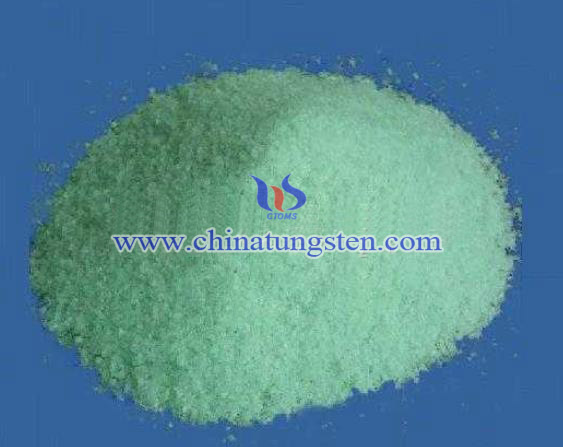Tungsten Trioxide Degradating Sewage
- Details
- Category: Tungsten Information
- Published on Thursday, 03 March 2016 17:12
 Methylene blue is phenothiazine salt, and it is unstable positive charge. It can be dissolved in water or ethanol, insolubling in ether. Methylene blue is more stable in the air; the solution is alkaline and toxic. Methylene blue is widely used in terms of chemical indicators, dyes, coloring agents and biological drugs. It can be used in the manufacture of ink and color lakes and organisms, bacteria and other aspects of the organization of chromatin. It is used to treat methaemoglobinaemia because of the reduction of methylene blue and its injection. Nitrobenzene is also used for rescue, nitrite and cyanide poisoning. Because of its role of disinfection, methylene blue can be treated with its cystitis and urethritis. In addition, methylene blue will be discharged into the body 30 minutes (injection) several hours (oral) within the urine, which resulting in urine temporarily blue, and it is also used for determination of renal function. In the breeding of ornamental fish, the methylene blue solution is 0.1-0.2ppm that can be used as a disinfection treatment of white spot disease or other diseases.
Methylene blue is phenothiazine salt, and it is unstable positive charge. It can be dissolved in water or ethanol, insolubling in ether. Methylene blue is more stable in the air; the solution is alkaline and toxic. Methylene blue is widely used in terms of chemical indicators, dyes, coloring agents and biological drugs. It can be used in the manufacture of ink and color lakes and organisms, bacteria and other aspects of the organization of chromatin. It is used to treat methaemoglobinaemia because of the reduction of methylene blue and its injection. Nitrobenzene is also used for rescue, nitrite and cyanide poisoning. Because of its role of disinfection, methylene blue can be treated with its cystitis and urethritis. In addition, methylene blue will be discharged into the body 30 minutes (injection) several hours (oral) within the urine, which resulting in urine temporarily blue, and it is also used for determination of renal function. In the breeding of ornamental fish, the methylene blue solution is 0.1-0.2ppm that can be used as a disinfection treatment of white spot disease or other diseases.
Tungsten trioxide is a semiconductor photocatalyst that can be used to degrade contaminants in water. In the reaction of photocatalytic treatment of methylene blue with tungsten trioxide, the optimum processing conditions for the tungsten trioxide are dosage 50mg, reaction time 40min, H2O2 dosage 4mL. We can determine the degradation reaction in different tungsten trioxide photocatalytic reaction system in the series by a kinetic study. The use of tungsten trioxide photocatalytic degradation of contaminants in water is one of the more popular research topics; the photocatalyst can generate holes and have a strong oxidizing power of hydroxyl radicals in the reaction, which helps it to get so much attention.
| Tungsten Oxide Supplier: Chinatungsten Online www.tungsten-oxide.com | Tel.: 86 592 5129696; Fax: 86 592 5129797;Email:sales@chinatungsten.com |
| Tungsten News & Prices, 3G Version: http://3g.chinatungsten.com | Molybdenum News & Molybdenum Price: http://news.molybdenum.com.cn |



 sales@chinatungsten.com
sales@chinatungsten.com